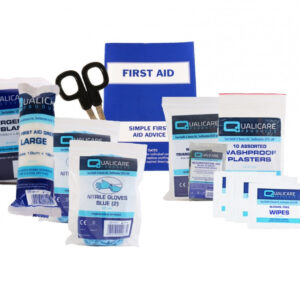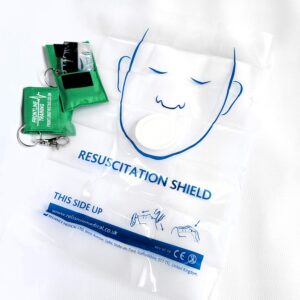Severe Allergic Reaction
An allergy is an abnormal response to an allergen or a stimulating substance. A severe allergic reaction is termed as anaphylaxis which can lead to anaphylactic shock.
Discover the signs to watch for and the appropriate actions to take.

⚠️
Emergency Advice
If someone is having a severe allergic reaction:
- Call 999/112 immediately
- Use their auto-injector if they have one
- Monitor their breathing
What is it?
An allergy refers to an atypical response to an allergen or a triggering substance.
One of the most prevalent allergens is plant pollen, notorious for inducing hay fever. Other triggers include animal hair/ fur, bee and wasp stings, medications (particularly anti-biotics like penicillin), and foods like nuts and shellfish.
What is a Severe Allergic Reaction?
A severe allergic reaction, also known as, Anaphylaxis, has the potential to emerge mere seconds after an individual comes into contact with the allergen. This reaction can impact the entire body, and if there isn’t swift intervention, it can lead to anaphylactic shock, which can have fatal consequences.
Recognition features
Signs and symptoms
Keep an eye out for:
- A red, itchy rash or elevated patches of skin (hives).
- Red, itchy, watery eyes.
- Swelling in the hands, feet, or face.
- Abdominal discomfort or pain, vomiting, or diarrhoea.
There might also be:
- Breathing difficulties.
- Swelling of the tongue and throat, often accompanied by puffiness around the eyes.
- Feelings of confusion and restlessness.
- Signs of shock (pale, cold, clammy skin) leading to a collapse and unresponsiveness.
Treatment
- Dial 999 or 112 immediately and inform the ambulance service that you believe someone is having a severe allergic reaction.
- If someone has a severe allergy, they might carry medication such as an auto-injector with them. This device holds a pre-measured dose of adrenaline, which, upon injection, can assist in reducing the body’s allergic response.
If they have one, help them use it, or alternatively, follow the instructions to administer it yourself.
- Keep them comfortable and monitor both their breathing and responsiveness.
If there is no improvement or the symptoms reappear, repeated doses of adrenaline can be administered at five-minute intervals with a new auto-injector.
- If the casualty shows sign of shock (pale, cold, clammy skin), lay them down and elevate the legs
Train with us
This subject is covered in detail on the following courses that we offer:
- Anaphylaxis First Aid
- First Aid at Work
- Paediatric First Aid
- Combined First Aid at Work and Paediatric First Aid
Be prepared for anything with our first aid supplies 👀
-
 First Aid Kit – Refill£7.95
First Aid Kit – Refill£7.95 -
 CPR Face Shield Key Ring£3.50
CPR Face Shield Key Ring£3.50 -
 Universal First Aid Kit£15.00
Universal First Aid Kit£15.00




